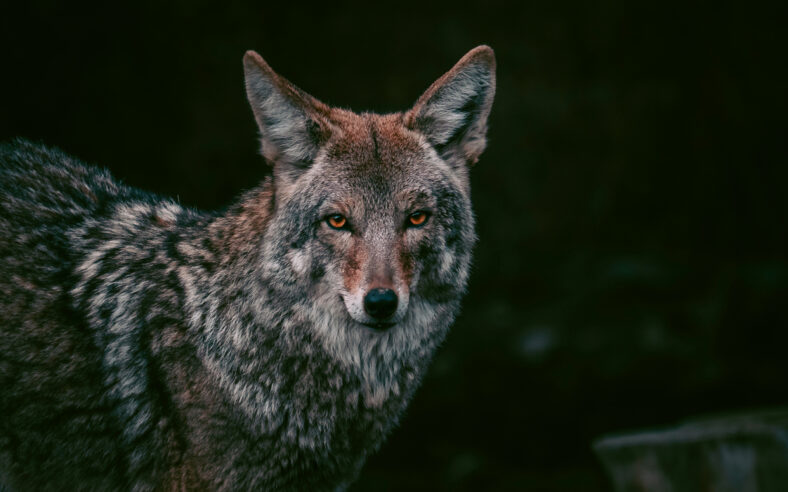From Berkeley To The Bronx, City Life Seems To Be Shaping The Evolution Of Coyotes

City life may be shaping the evolution of urban coyotes from Berkeley, California, to the Bronx in New York. In the past, evolution was thought to occur over long periods of time, but now, scientists have seen that it can happen within just a few generations.
Urban areas illustrate how evolution functions on a smaller chronological scale and how species adapt to human presence. Coyotes are especially adaptable and seem to be thriving alongside humans.
“Coyotes are doing really well in urban spaces,” said Elizabeth Carlen, the senior author of the study and a postdoctoral fellow with the Living Earth Collaborative at Washington University in St. Louis.
“Given the close evolutionary relationship between coyotes and domestic dogs, we leveraged the dog genome to think about what genes could be under selection in urban areas and how they might be changing.”
The differences between urban and rural coyotes have been clearly defined. However, there haven’t been many studies that investigated specific genes and how they may be affected. In a new study, the research team analyzed candidate genes for adaptive evolution in urban coyotes.
The researchers will target specific candidate genes for sequencing and comparisons. They found that the rural coyote’s diet mainly consists of mice, rabbits, and other small mammals.
Meanwhile, coyotes in the city have easier access to outdoor pet food and human refuse. Therefore, their consumption levels of starches and glucose are higher.
If sugar intake is sufficient enough to lead to insulin resistance and other negative health outcomes, then the genes that help with the regulation of insulin production may be selected for evolution. Urban coyotes will likely need to be able to digest more starch, as seen with domestic dogs in previous studies.
Throughout the United States, coyotes have become increasingly common in urban areas, but population trends vary in different cities.

Sign up for Chip Chick’s newsletter and get stories like this delivered to your inbox.
“We do know that we’re getting more coyotes on the East Coast because wolves have been displaced,” said Carlen. “In these places, we’re seeing more coyotes because they’re occupying the niche space that previously would have been occupied by wolves. Because if a wolf shows up in the Bronx, it’s going to be killed. But coyotes can fit in.”
Another project in St. Louis involves the use of motion-detecting wildlife cameras and GPS collars to monitor coyotes in and around the area near Washington University.
It is a challenge to study urban coyotes because they tend to hide from people. Hopefully, this new research will pave the way for scientists to examine how coyotes adapt to urban settings.
The field of urban evolution has been growing, but the linking of specific genes to urban adaptation is still relatively unexplored.
The study was published in Genome Biology and Evolution.
More About:Animals